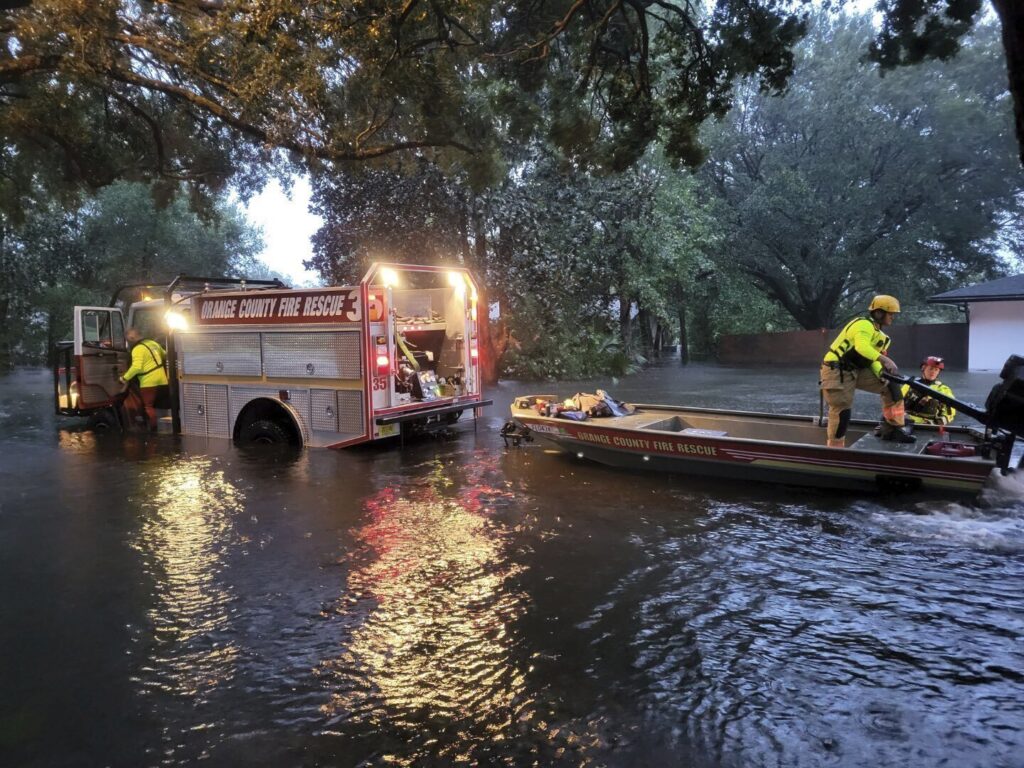Many trapped in Florida, Ian nears S. Carolina
Newslooks- PUNTA GORDA, Fla. (AP)
Rescue crews waded through flooded streets and used boats Thursday in a scramble to save people trapped after Hurricane Ian destroyed a cross-section of Florida and brought torrential rains that inundated more communities.
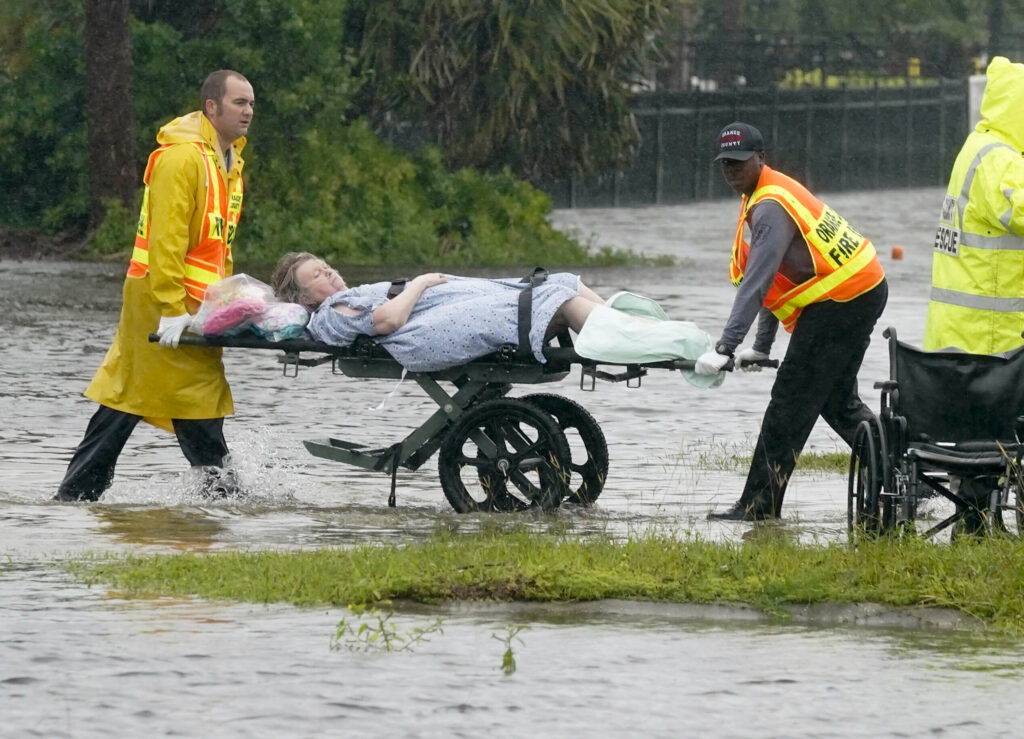
The destruction began to come into focus a day after Ian made landfall in Florida as one of the strongest hurricanes ever to hit to the U.S. The storm flooded homes on both of the state’s coasts, cut off the only bridge to a barrier island, destroyed a historic waterfront pier and knocked out electricity to 2.67 million Florida homes and businesses. At least one man was confirmed dead.
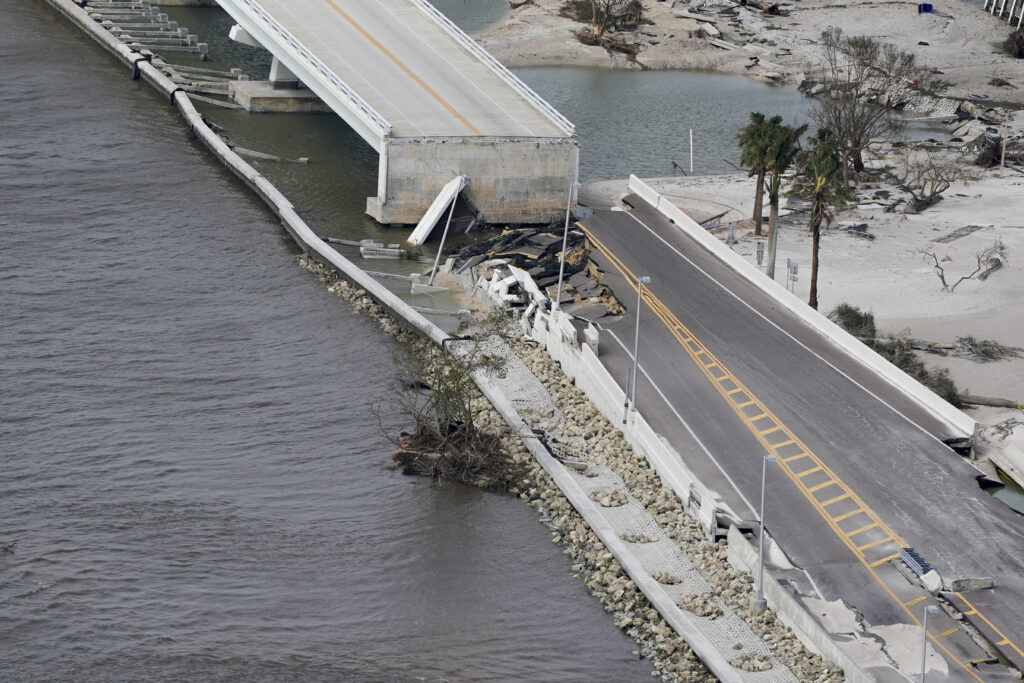
“We’ve never seen storm surge of this magnitude,” Florida Gov. Ron DeSantis told a news conference. “The amount of water that’s been rising, and will likely continue to rise today even as the storm is passing, is basically a 500-year flooding event.”
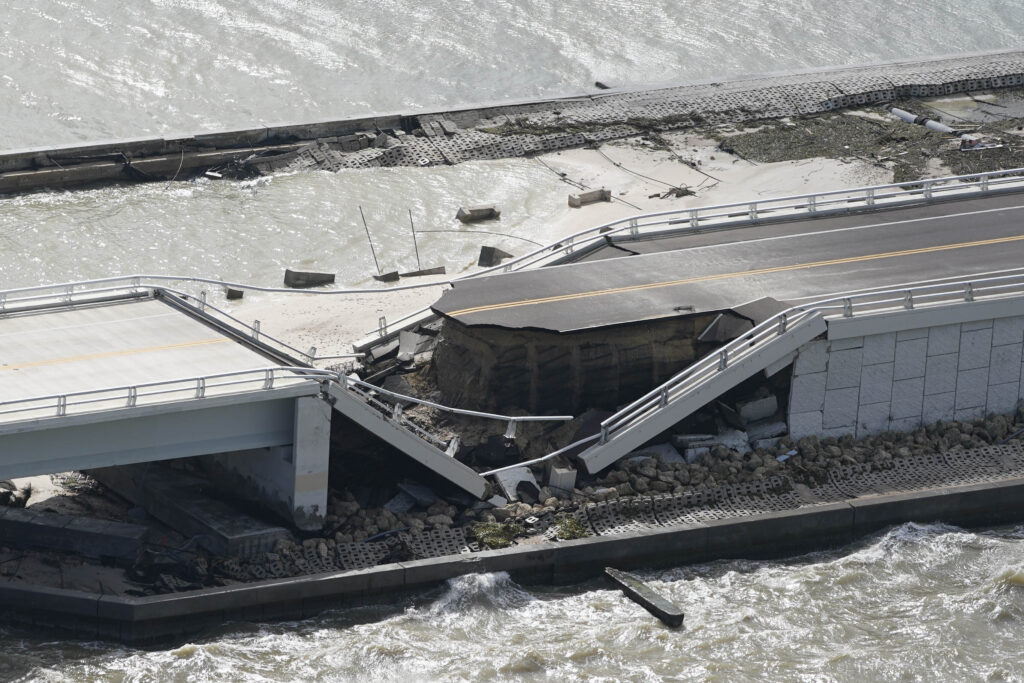
Though downgraded to a tropical storm by Thursday morning, the National Hurricane Center said storm surge and flooding rains remained a threat as Ian crept across the Florida peninsula and emerged in the Atlantic Ocean north of Cape Canaveral. Forecasters predicted a northward turn toward South Carolina, and a hurricane warning was issued for the state’s coastline.
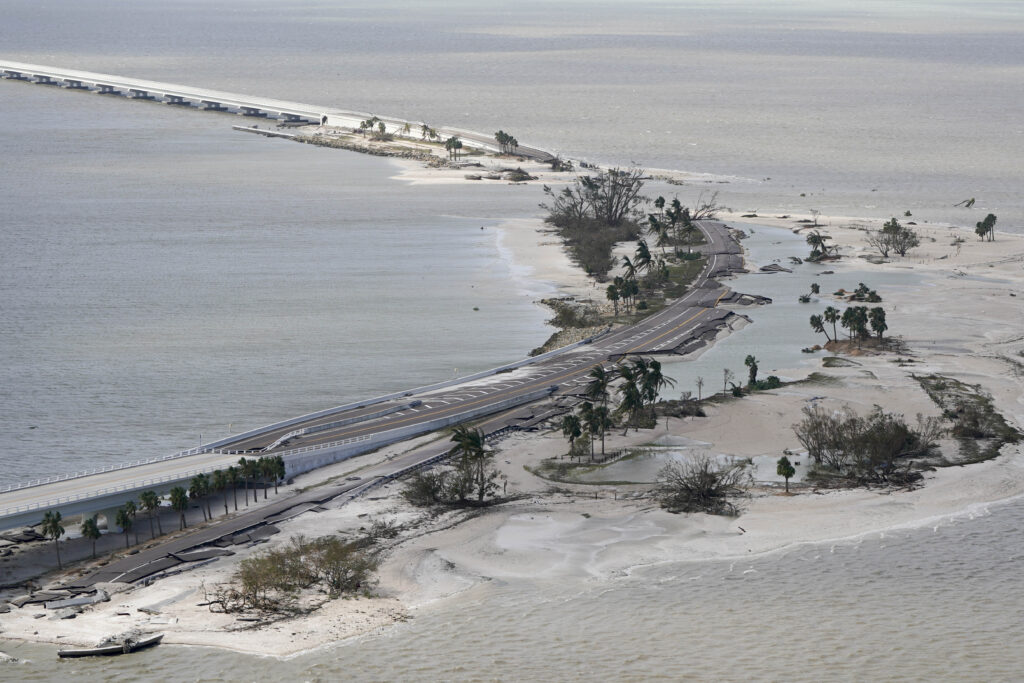
Sheriffs in southwest Florida said 911 centers were inundated by thousands of stranded callers, some with life-threatening emergencies. The U.S. Coast Guard began rescue efforts around daybreak on barrier islands near where the Ian struck, DeSantis said. Fire departments fanned out in flooded areas as well.
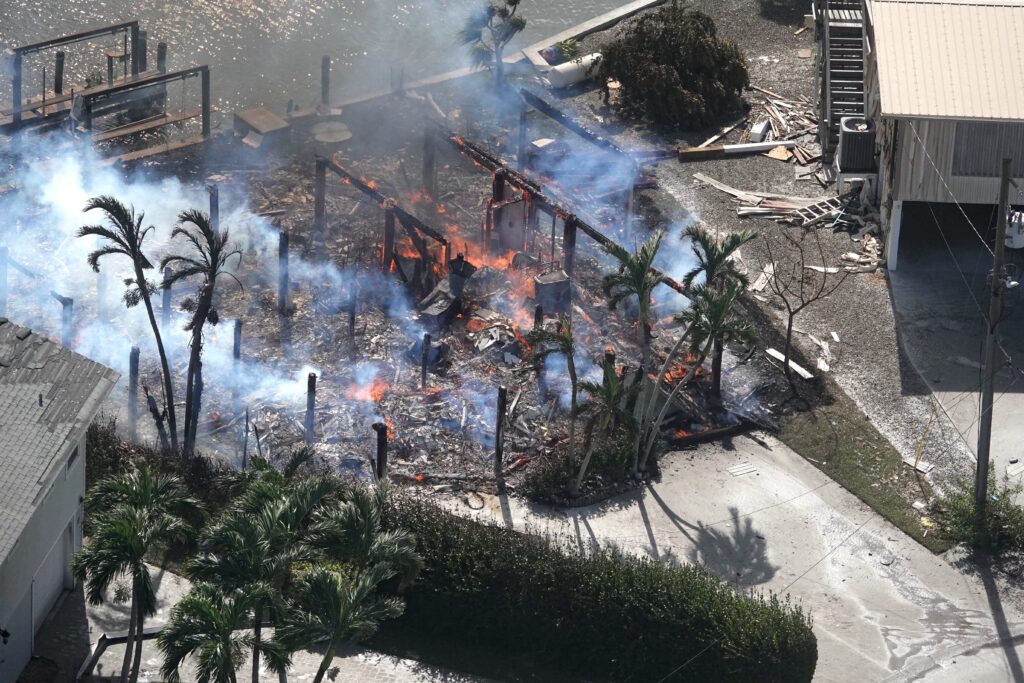
In the Orlando area, Orange County firefighters used boats to reach people in a flooded neighborhood. A photo the department posted on Twitter showed one firefighter carrying someone in his arms through knee-deep water. At an area nursing home surrounded by water, patients were carried on stretchers across floodwaters to a waiting bus.
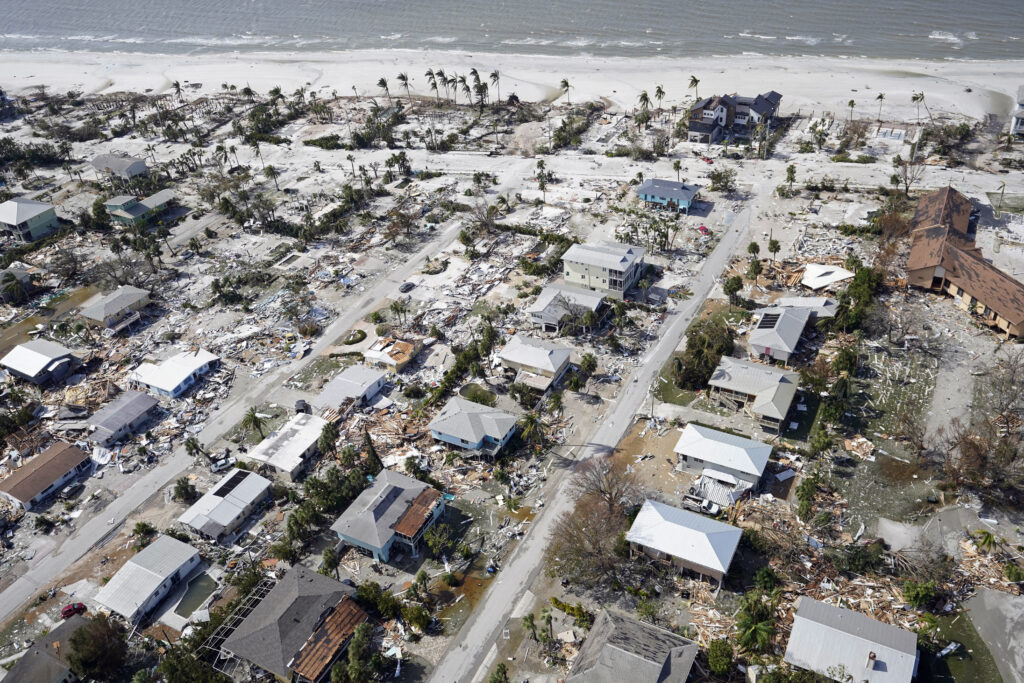
In Fort Myers, a few miles west of the barrier island where Ian came ashore, Valerie Bartley’s family spent desperate hours Wednesday holding a dining room table against their patio door, fearing the storm raging outside “was tearing our house apart.”
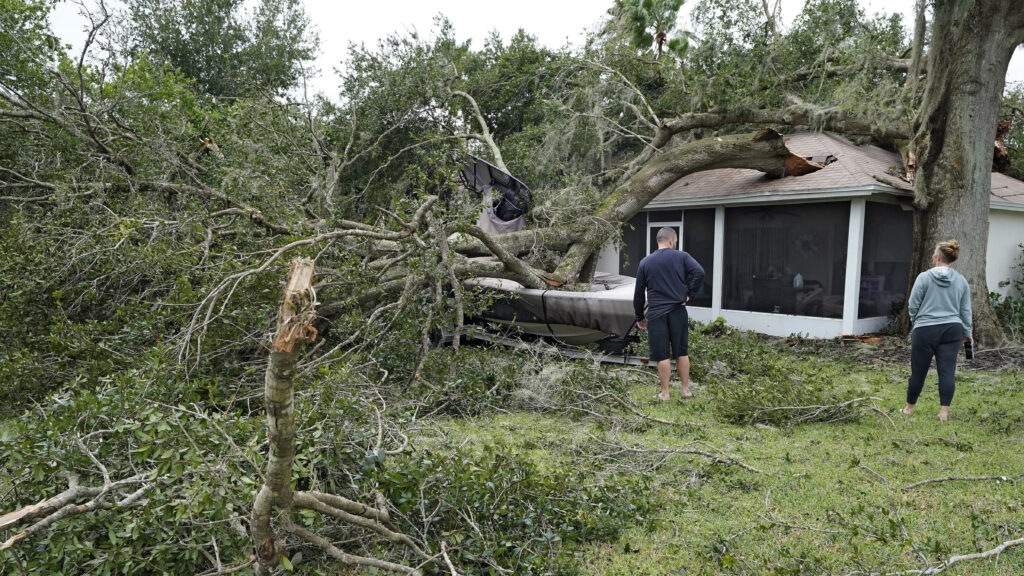
“I was terrified,” Bartley said. “What we heard was the shingles and debris from everything in the neighborhood hitting our house.”
She said her 4-year-old daughter grabbed her hand and said: “I’m scared too, but it’s going to be OK.” The girl was right. The storm ripped away patio screens and snapped a palm tree in the yard, Bartley said, but left the roof intact and her family unharmed.
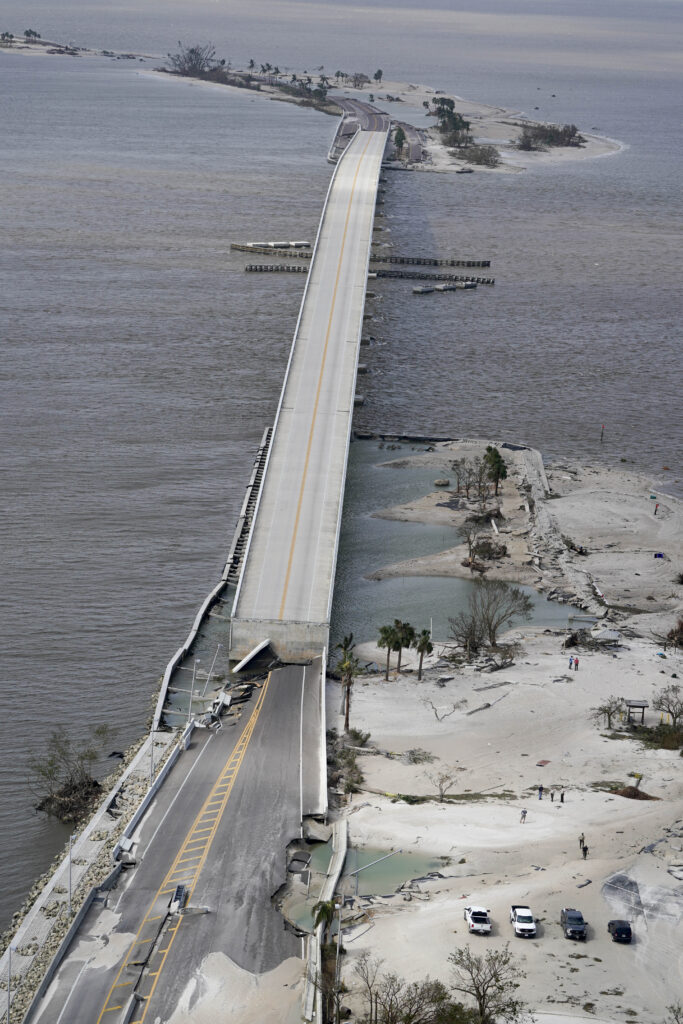
Authorities confirmed at least one Florida death — a 72-year-old man in Deltona who fell into a canal while using a hose to drain his pool in the heavy rain, the Volusia County Sheriff’s Office said. Two other storm deaths were reported in Cuba after Ian struck the island nation earlier.
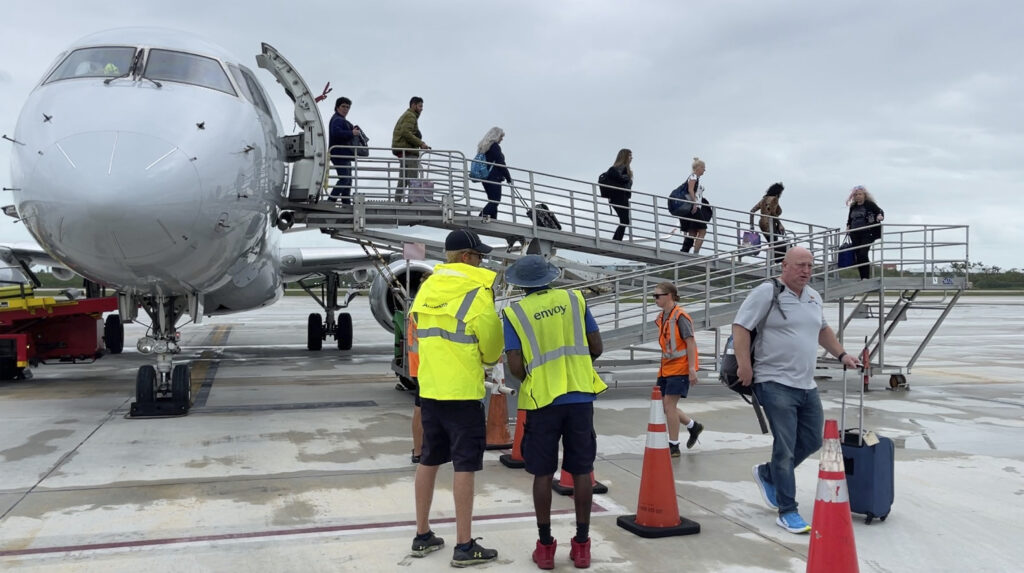
Lee County Sheriff Carmine Marceno said his office was scrambling to respond to thousands of 911 calls, but many roads and bridges in Fort Myers and the surrounding area remain impassable.
“It crushed us.” Marceno told ABC’s “Good Morning America.” “We still cannot access many of the people that are in need.”
Emergency crews sawed through toppled trees to reach stranded people. Many in the hardest-hit areas were unable to call for help amid widespread electrical and cellular outages.
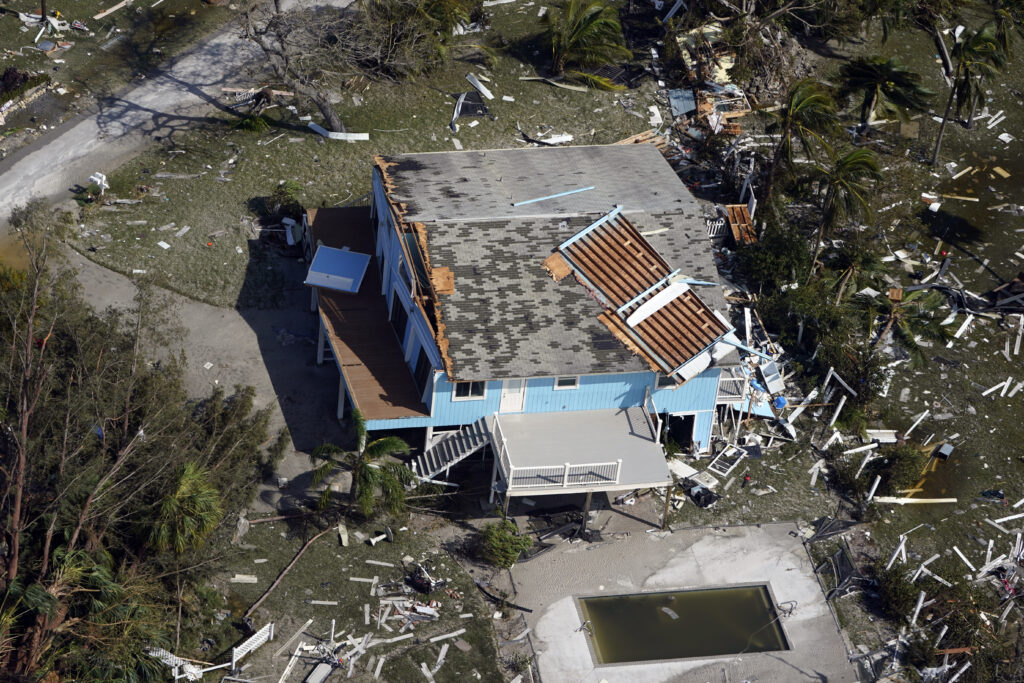
“Portable towers are on the way for cell service. Chances are your loved ones do not have ability to contact you,” said the sheriff’s office in Collier County, which includes Naples. “We can tell you as daylight reveals the aftermath, it’s going to be a hard day.”
A chunk of the Sanibel Causeway fell into the sea, cutting off access to the barrier island where 6,300 people normally live. It was unknown how many had heeded orders to evacuate, but Charlotte County Emergency Management Director Patrick Fuller expressed cautious optimism that worst-case scenarios might not have been realized.
No deaths or injuries have been confirmed in the county, and flyovers of barrier islands show “the integrity of the homes is far better than we anticipated,” Fuller said.
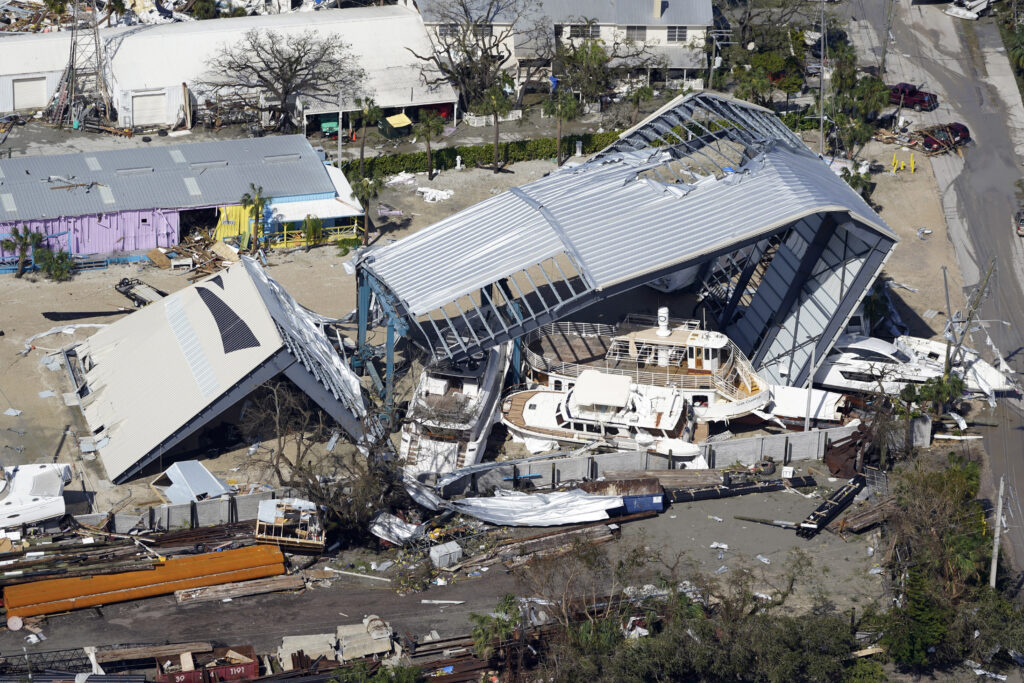
South of Sanibel Island, the historic beachfront pier in Naples got destroyed, with even the pilings underneath torn out, as towering waves crashed over the structure. “Right now, there is no pier,” said Penny Taylor, a Collier County commissioner.
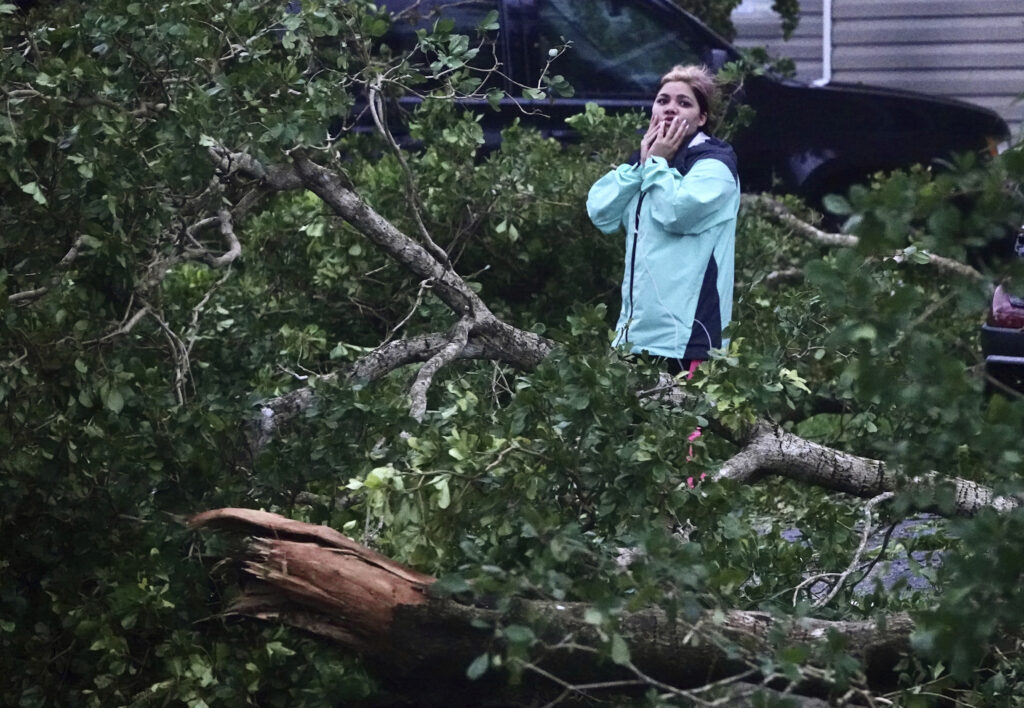
In Port Charlotte, a hospital’s emergency room flooded and fierce winds ripped away part of the roof, sending water gushing down into the intensive care unit. The sickest patients — some on ventilators — were crowded into the middle two floors as the staff prepared for storm victims to arrive, said Dr. Birgit Bodine of HCA Florida Fawcett Hospital.
The Florida Highway Patrol shut down the Florida Turnpike in the Orlando area and said the main artery in the middle of the state will remain closed until water subsides.
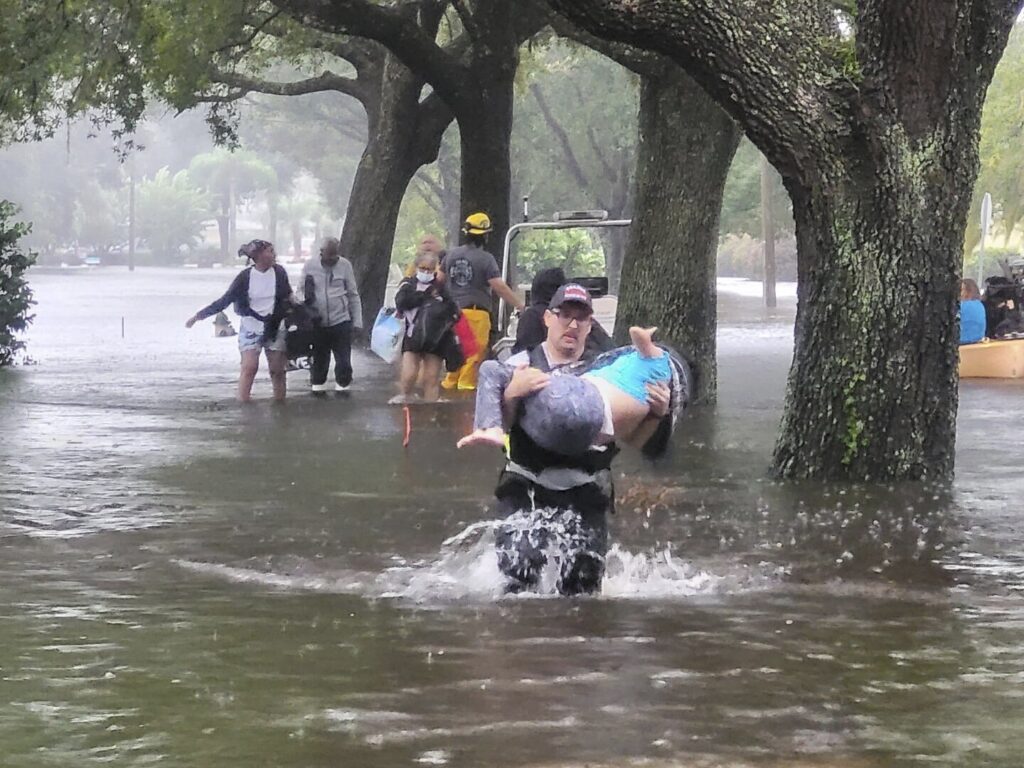
Ian struck Florida as a monstrous Category 4 storm, with 150 mph (241 kph) winds that tied it for the fifth-strongest hurricane ever to hit the U.S.
Even after weakening, Ian’s tropical-storm force winds still reached 415 miles (667 kilometers) from its center. The hurricane center warned storm surge of 6 feet (1.83 meters) or more was possible from Daytona Beach, Florida, to north of Charleston, South Carolina. And rainfall of up to 8 inches (20.32 centimeters) threatened flooding in the Carolinas and Virginia.
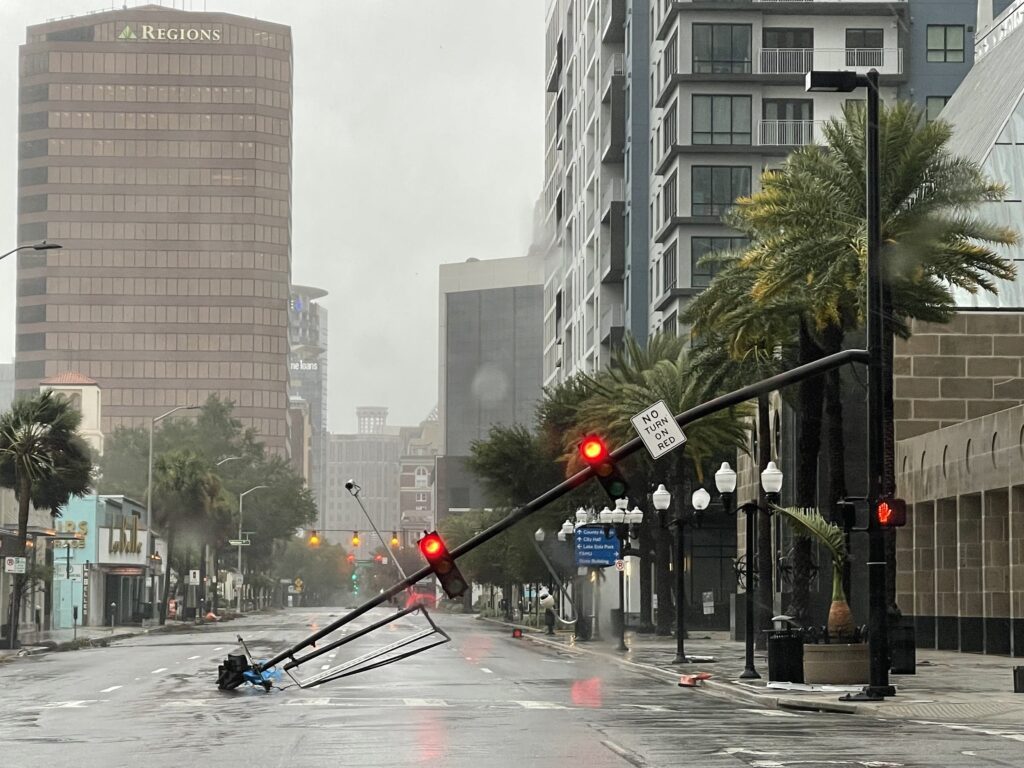
“It doesn’t matter what the intensity of the storm is. We’re still expecting quite a bit of rainfall,” Robbie Berg, senior hurricane specialist with the National Hurricane Center, said in an interview with The Associated Press.
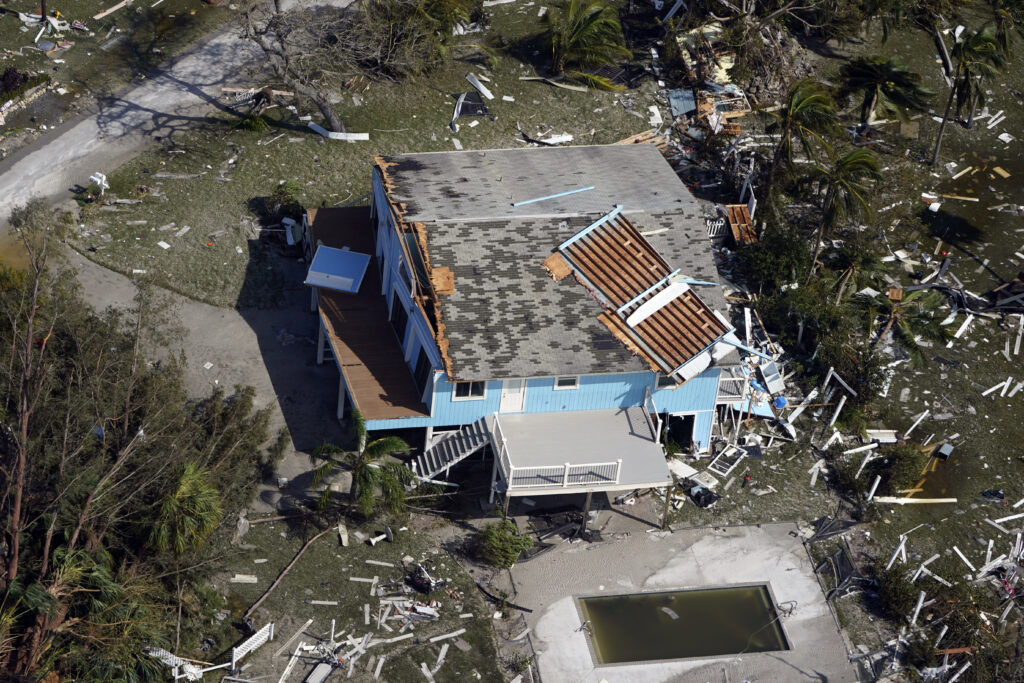
The U.S. Coast Guard initiated a search and rescue mission for 23 people after a boat carrying Cuban migrants sank Wednesday in stormy weather east of Key West. It found three survivors, and four others swam to shore, the U.S. Border Patrol said. Air crews continued to search for possibly 20 remaining migrants.
Florida health care facilities evacuate patients after Ian
Thousands of people were evacuated from nursing homes and hospitals across Florida on Thursday even as winds and water from Hurricane Ian began receding. Hundreds of those evacuations were taking place across the hard-hit Fort Myers region, where damage cut off potable water to at least nine hospitals.
Kristen Knapp of the Florida Health Care Association says 43 nursing homes evacuated about 3,400 residents as of Thursday morning, mostly in southwest Florida.
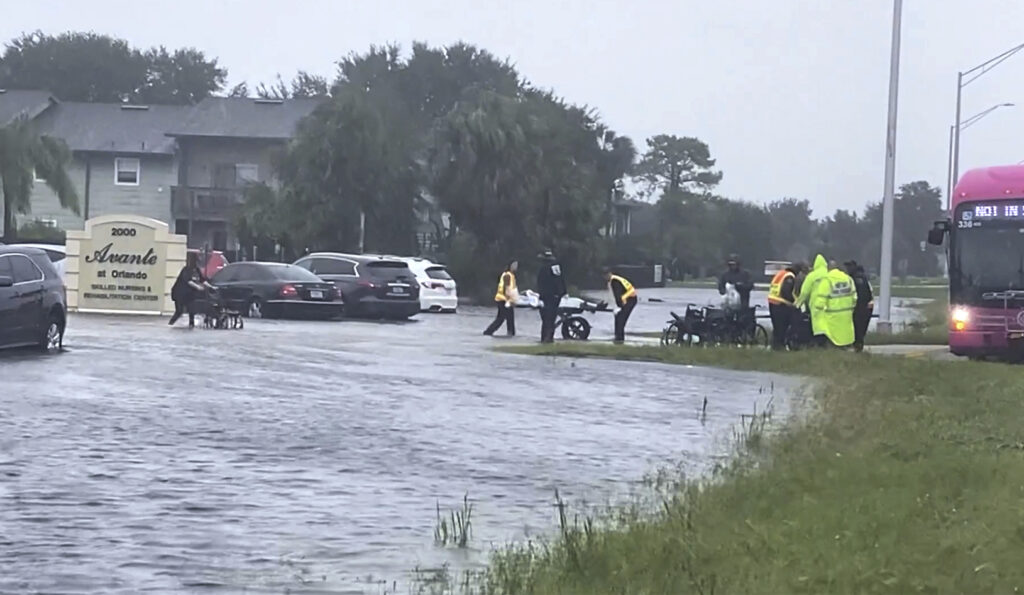
As many as 20 facilities had reported electricity outages, but Knapp says generators are powering those buildings. Water was shut off at some facilities, too. And one area hospital began assessing the full damage from ferocious winds that tore away parts of its roof and swamped its emergency room.
In Orlando, residents of the Avante nursing home were evacuated to ambulances and waiting buses through floodwater in a neighborhood that doesn’t typically flood. Paramedics rolled out residents one by one on stretchers and wheelchairs. At the neighboring Palm Island at Baldwin apartment complex, cars were submerged in the parking lot.
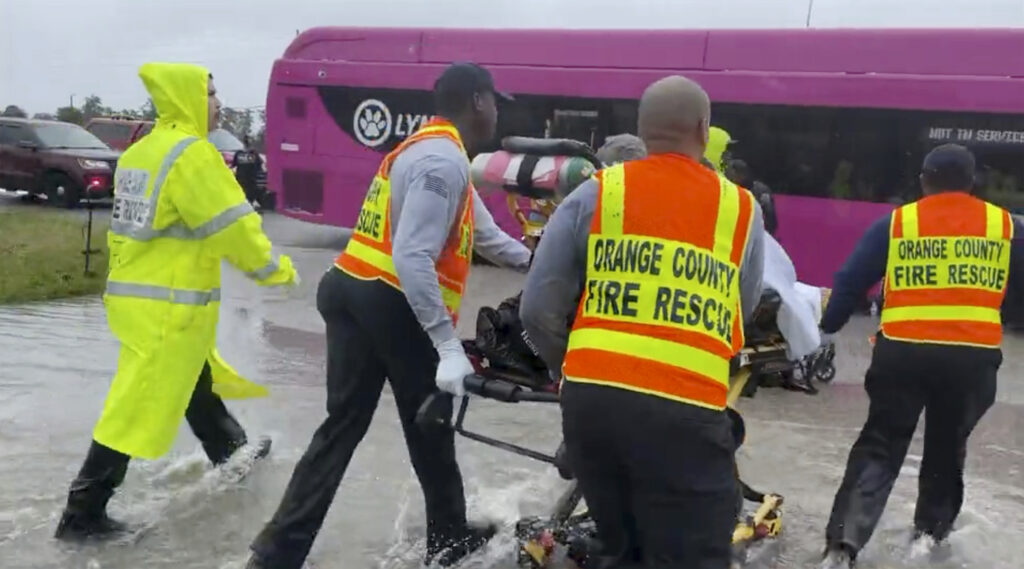
Even as the problem was too much water in much of the state, at least nine hospitals in southwest Florida had the opposite problem.
“We have one large health system in southwest Florida that is without water in all of their facilities. And so they are fast approaching a point where they will not be able to safely take care of their patients. So that is an urgent focus to get those patients transferred,” said Mary Mayhew, the president of the Florida Hospital Association.
Mayhew said more 1,200 patients were being evacuated.
Meanwhile, other hospitals could find themselves further strained, she said.
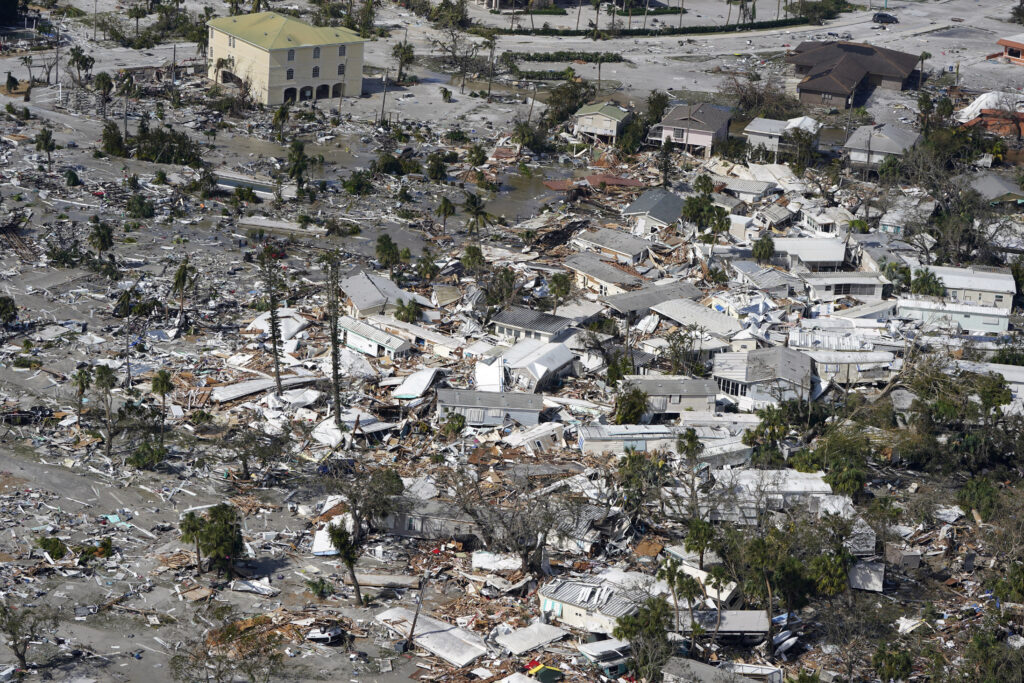
“There is considerable effort underway to rescue individuals who also will need medical care. And to identify hospital beds available either in the region or elsewhere,” she said.
Hurricane Ian swamped HCA Florida Fawcett Hospital in Port Charlotte – just north of Fort Myers – from both above and below, as the storm surge flooded its lower level emergency room while fierce winds tore part of its fourth floor roof from its intensive care unit, according to a doctor who works there.
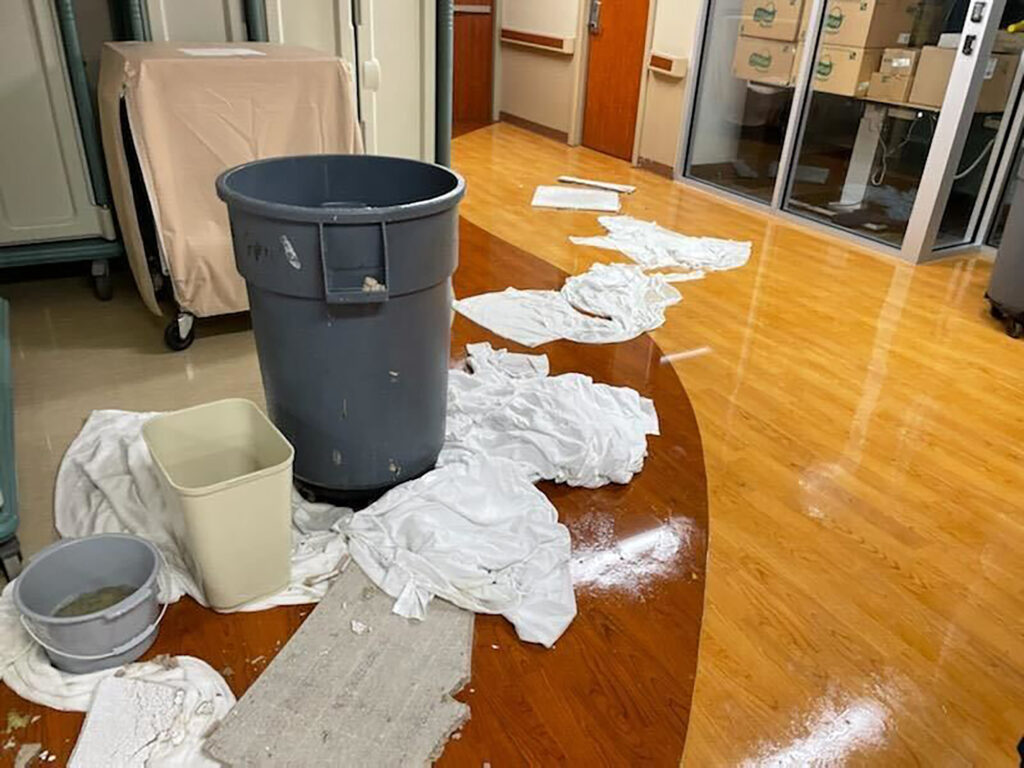
Dr. Birgit Bodine spent the night at the hospital, anticipating the storm would make things busy, “but we didn’t anticipate that the roof would blow off on the fourth floor,” she said.
Water gushed down Wednesday from above onto the ICU, forcing staff to evacuate the hospital’s sickest patients — some of them on ventilators — to other floors. Staff members resorted to towels and plastic bins to try to mop up the sodden mess.
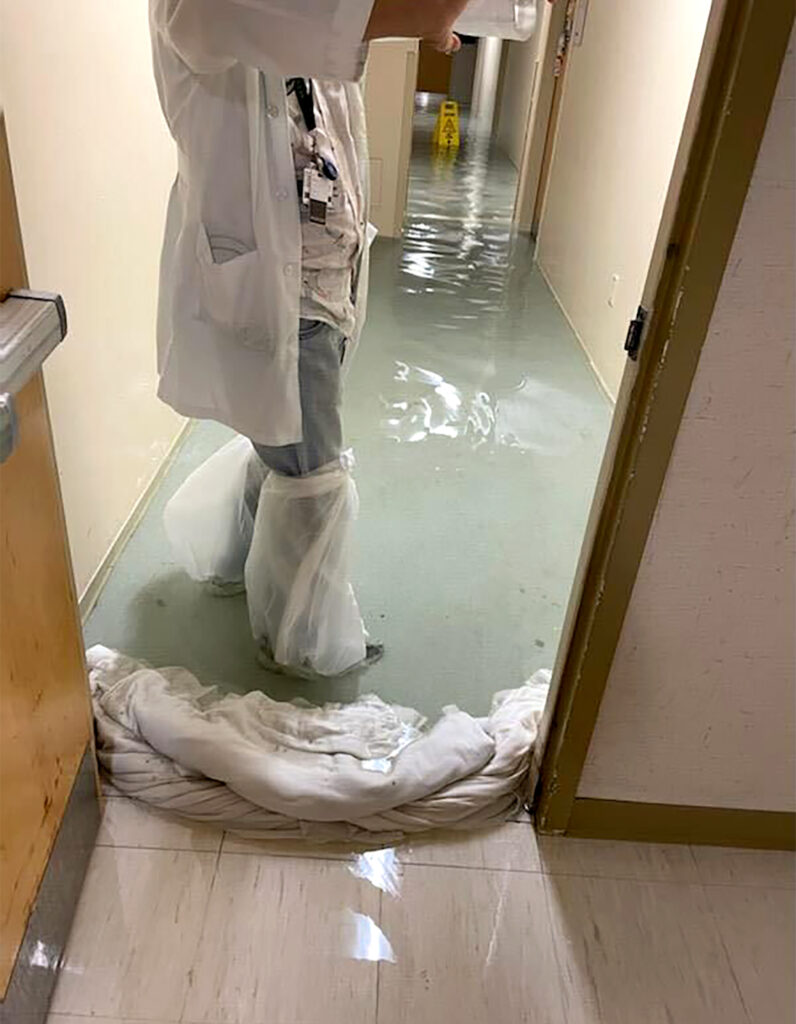
The medium-sized hospital spans four floors, but patients were forced into just two because of the damage.
Bodine plans to spend another night at the hospital, when incoming storm injuries could make things worse.
“The ambulances may be coming soon and we don’t know where to put them in the hospital at this point,” she said. “Because we’re doubled and tripled up.”
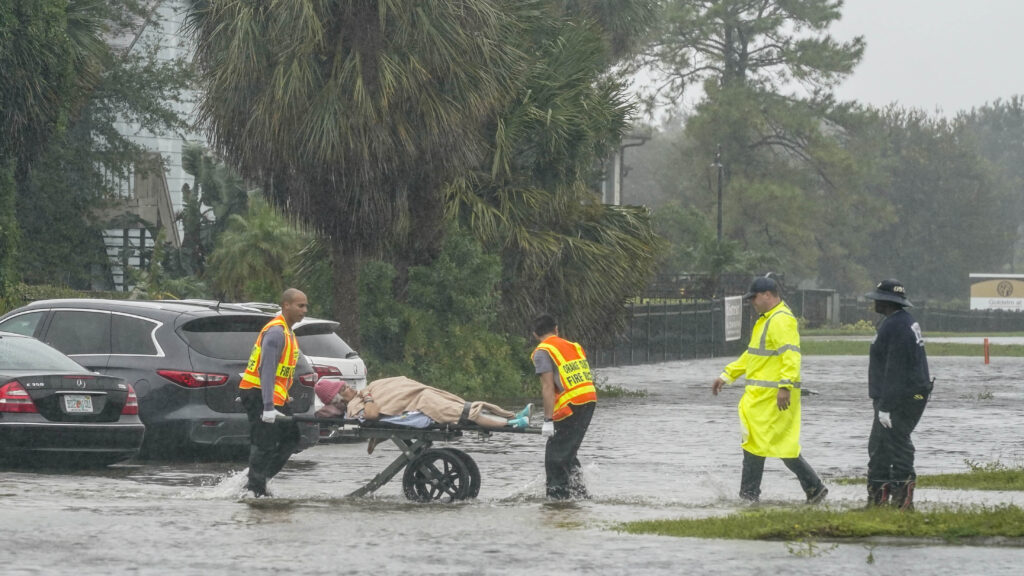
Despite the inundation, Bodine said patients have been mostly understanding and upbeat.
“For us, as much as everything is terrible and we’re exhausted … as long as our patients do OK and nobody ends up dying or having a bad outcome, that’s what matters,” Bodine said.

